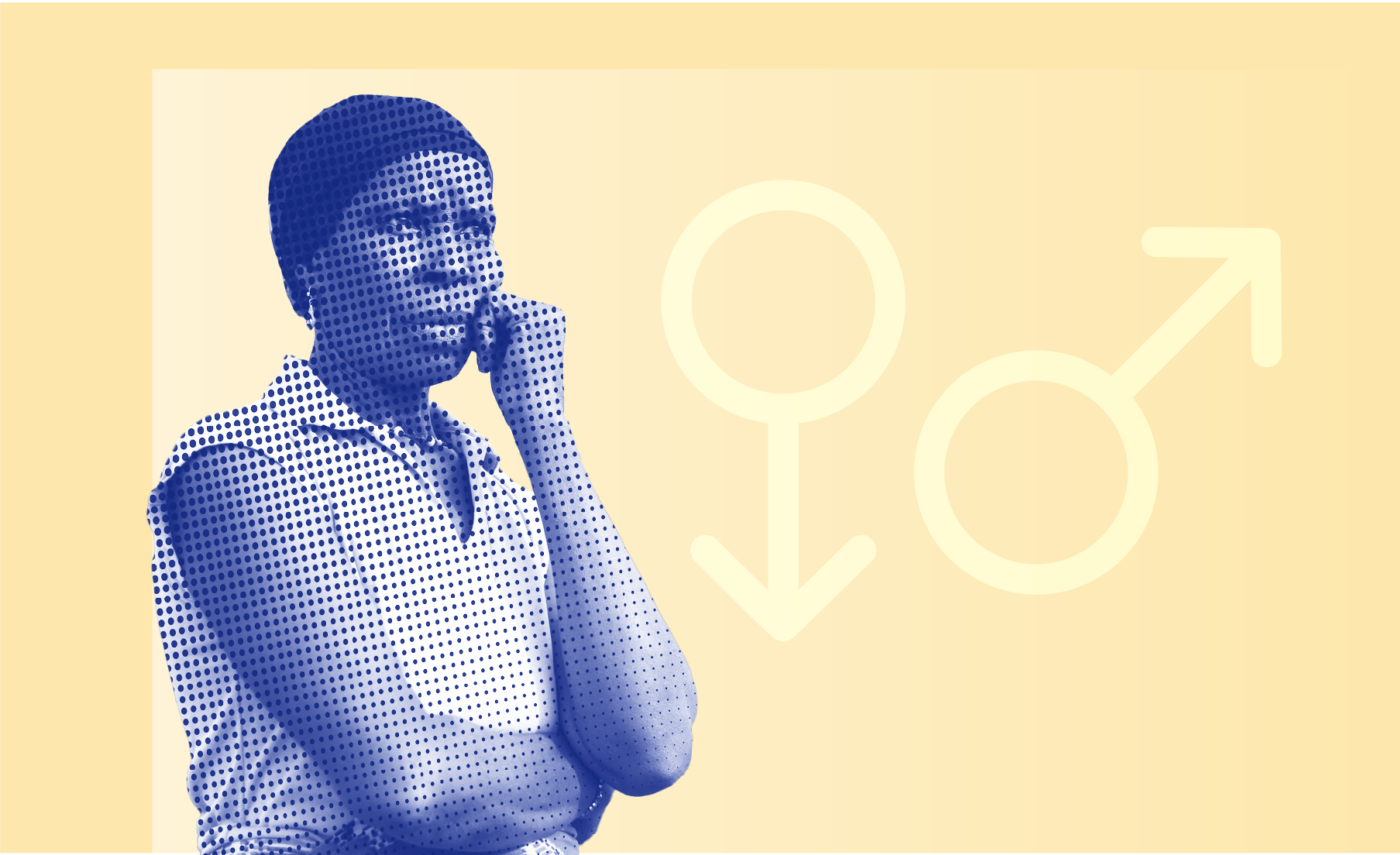Blog
Gender and corruption: Charting the course for the next 20 years (Part 2)

Read Part 1 of this blog: Gender and corruption: What we’ve learned from 20 years of research
Two decades of studying gender and corruption
Twenty years after the first studies highlighted the nexus of gender and corruption, research has shown how nuanced the relationship is. In particular, three main questions have been discussed:
- How gender impacts on where and how corruption is experienced
- Which forms of corruption an individual is experiencing
- What role a person can take in anti-corruption
Also, more questions are being raised about this multi-faceted relationship. For instance, the idea that increasing female representation in politics could reduce corruption sparked optimism but proved more complex in reality. Robust institutions, access to corrupt networks, and assimilation into existing networks all shape the gender–corruption relationship. Gender roles influence vulnerability to corruption: women often face corruption in caregiving sectors; men encounter it more in business and law enforcement.
Research also shows that women’s role in anti-corruption efforts is multi-faceted. This is because female whistleblowers face unique challenges, including gender-based discrimination, retaliation, and social stigmatisation. In the last two decades, a feminist perspective has also expanded the dialogue on gender and corruption, acknowledging issues such as ‘sextortion’.
The future anti-corruption agenda: A multi-step approach
While impressive strides have been made to better understand the relationship between gender and corruption, there are gaps that must be addressed, for example by collecting gender-disaggregated data, adopting a global perspective, and considering intersectionality. Understanding gender dynamics is crucial for developing holistic anti-corruption strategies, and also for fostering a more equitable society.
Some of the issues can be addressed relatively quickly and easily. However, many aspects of this complex relationship need to be priorities in the anti-corruption agenda for a long time to come. This might mean a multi-step approach. We can only ensure an effective approach if we expand the research agenda to become more inclusive in the coming years.
Making research more inclusive: Our agenda for the next five years
Over the next five years, the relationship between gender and corruption needs to be at the centre of the research and policy agenda, rather than a side note. Currently, the gender and corruption nexus is still considered a niche and ‘women’s topic’. The focus should be on ensuring that everyone understands the importance of this nexus in the fight against corruption, and for achieving gender equality. Finding allies among women’s rights and gender equality organisations is important and is already underway. Importantly, gender equality is not a women’s issue but also positively affects men. Therefore, the discussion on gender (equality) and corruption also needs to involve men more actively.
Gender needs to be mainstreamed in projects and programmes at national and international levels. What is already fairly established and routine in other areas has often been neglected in the anti-corruption discourse. This means that issues around gender are frequently overlooked, and negative consequences of anti-corruption on parts of the population are being ignored. For more effective approaches, it is crucial that all programmes consider individuals’ distinct lived realities and their different involvement in corruption. It is also important that anti-corruption initiatives avoid unintended consequences that inadvertently harm vulnerable groups and individuals.
We also argue that mainstreaming gender – moving away from considering gender and corruption as a ‘women’s topic’ – is crucial to attracting more funding for research and interventions. This would broaden perspectives, ensure a realistic representation of the issue, attract a wider audience and potential funders, and align with ethical and policy considerations. By incorporating an understanding of gender in research, projects become more comprehensive, relatable, and likely to receive support and funding.
When gender is not actively included from the outset, there will typically be no funding available to include this theme at a later stage. Such funding is essential for capacity development on the nexus of corruption and gender, to facilitate the relevant state and non-state agencies to collect more gender-sensitive corruption data.
Effective policy measures rely on accurate gender statistics that include LGBTQI+ people and also reflect gender relations, inequalities, and roles. We also need anti-corruption policies and programmes that challenge gender stereotypes and biases associated with corruption, including gender-sensitive, accessible, and inclusive whistleblowing and reporting channels.
Over the next five years, the research community should aim to expand the field to include a broader view of gender, and also a wider variety of voices as researchers and research participants. This includes moving away from the men/women dichotomy and extending into different subfields, such as the broader three-point nexus between gender, corruption, and religion, and discussions around gender and (toxic) masculinity.
Listen to post-colonial voices
Research needs to move away from a euro-centric view. This includes focusing on scholarship from researchers in other parts of the world and on regions that have often been ignored.
Research from European or North American institutions receives disproportionate and biased attention, while those working in other parts of the world are often not heard. Yet, most research on corruption is completed in countries outside of Europe and North America. This means that expert voices from these countries are frequently silenced, and indigenous and decolonial research methods are ignored or less frequently published. There is not enough critical reflection on the gender and corruption nexus within Europe and North America, implying that this is ‘someone else’s problem’.
This also puts a stronger focus on the impact of colonialism. Colonisation, corruption, and gender inequality share intricate connections. Historical colonisation often entrenched patriarchal norms, leading to gender disparities. Corruption emerged from power imbalances during colonisation, impacting on economic and political systems. Post-colonial legacies maintained these connections, perpetuating corruption and gender inequality.
Recognising these interplays is essential for fostering equitable societies and dismantling corrupt systems. And, while all of these are crucial changes that will improve our understanding of the gender and corruption nexus – and increase support in the policy community – it is not enough.
Thinking longer term: Where do we head in the next ten years?
Over the next ten years, we need a shift in our understanding of gender within corruption research and the theories that are being used to analyse the phenomenon. We need to move away from a binary understanding of gender, and connect to discussions in other fields to advance our knowledge of gender, gender roles, norms, and socialisation – such as queer theory, feminism, and decolonisation. We must go beyond individual identities and examine how institutions, media, education, and culture shape gender norms and expectations, and social learning. By doing so, we can work towards a more inclusive and equitable society that affirms all gender identities and expressions.
It is not enough to review the literature in these fields; we must also embrace the new research methods that they use. This calls for traditional academic journals to include research methods that are new and may be currently less familiar to their audience. This could include narrative methods, experimental studies, interactive workshops and role-playing to simulate corruption scenarios and gender dynamics within various contexts (eg workplaces or government agencies). Research could also include sentiment analysis of social media, and the role of female whistleblowers, as well as indigenous and decolonial research methodologies. More open access will also ensure that a wider audience can read the research.
As research shows how important gender equality is for the success of anti-corruption initiatives, we argue that anti-corruption practitioners and researchers also need to actively engage in breaking up patriarchal structures to move towards a society that values equality and inclusivity. Corruption often intersects with other forms of discrimination, such as ableism, racism, and classism, creating compound disadvantages for marginalised individuals. Breaking down these structures is crucial to dismantling systemic oppression and ensuring that everyone, regardless of their background, has an equal chance to succeed.
Corruption flourishes in environments where power is concentrated and unchecked, which is a common outcome of patriarchal systems. When a few individuals hold disproportionate power due to their gender, it can lead to a lack of diversity in decision-making processes and a disregard for the needs and rights of marginalised groups. This exclusionary environment can foster corruption by allowing unethical behaviour to go unnoticed or unchallenged. By dismantling patriarchal norms, a more transparent and accountable society can be created where decisions are made based on merit rather than gender.
What can we achieve in the next 20 years?
Thinking back over the last two decades encourages us to ask, what should we achieve in the next 20 years? The focus on more gender-sensitive data should complement a translation of the importance of the nexus of gender and corruption from academic research to policy, where gender mainstreaming in anti-corruption programmes, projects and strategies is the norm. This will ensure that initiatives consider how different individuals encounter specific forms of corruption because of their gender, where these forms of corruption occur, who the perpetrators are, and what increases vulnerability to these particular forms of corruption.
In the next two decades, the nexus of corruption and gender should be holistically implemented in policy and research on anti-corruption and internalised by all those working on the topic. It should become standard that any analysis of corruption, and any measure to counter it, should include a gender focus. Ideally, gender would be included in research and policy in such a standard way that it no longer needs to be a separate research field.
Conclusion
While the last 20 years have moved our knowledge of gender and corruption forward tremendously, there is no time to stop and admire what has been done. We need to critically reflect on what is missing and how we can ensure that all voices are heard. We need to ensure that anti-corruption fosters gender equality and does not perpetuate existing inequalities. Crucially, we should continue to include every member of a society as allies, particularly men; a more gender-equal world benefits all of humanity.
Challenging toxic masculinity norms is crucial for fostering gender equality, elevating minority voices, and dismantling harmful stereotypes that affect us all. Beyond social progress, it also holds the key to reducing corruption. By rejecting traditional notions of dominance and emotional suppression, we encourage ethical leadership and honest communication. This cultural shift can lead to more transparent and accountable societies where corruption finds less room to thrive.
Anniversary blog series
U4 staff and friends celebrate U4’s 20th anniversary with a blog series reflecting on developments and lessons learned in a world of ever evolving corruption challenges:
- U4 at 20: A quiet birthday at home with friends (across the world) – Peter Evans
- Specialised anti-corruption institutions: Measuring their performance and managing our expectations – Sofie Schütte
- The role of technology in anti-corruption: Dystopian reflections – Daniel Sejerøe Hausenkamph
- Strategic litigation and its untapped potential for anti-corruption – Sophie Lemaître
- The anti-corruption community should become more ‘tribal’ – David Jackson
- Corruption risk management in the aid sector: past, present, and the path ahead – Guillaume Nicaise
- Corruption is unaffordable for Latin America’s resurgent left: Democracy and lives are at stake – Aled Williams and Daniela Cepada Cuadrado
- Corruption is absent from the UN ‘World of Debt’ report – Daniela Cepada Cuadrado
- Anti-corruption games: Learning how to face corruption challenges – Guillaume Nicaise and Rachael Tufft
- a) Gender and corruption: What we’ve learned from 20 years of research (Part 1)
b) Gender and corruption: Charting the course for the next 20 years (Part 2) – Ortrun Merkle and Ina Kubbe
And other blogs to come throughout 2023!
Sign up to the U4 Newsletter to get updates, or follow us on Twitter | Linkedin | Facebook.
Disclaimer
All views in this text are the author(s)’, and may differ from the U4 partner agencies’ policies.
This work is licenced under a Creative Commons Attribution-NonCommercial-NoDerivatives 4.0 International licence (CC BY-NC-ND 4.0)


